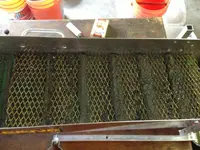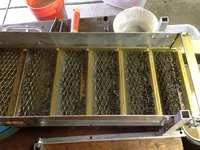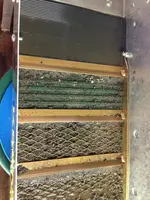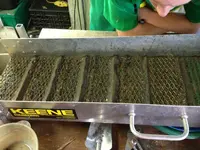Ok, I'm going to try and help you out the best I can. Going to a new area for a week you need to know how to pan good, it's the most important thing in prospecting. On the first day you get there I would do like everyone is saying walk the area out and take sample from different spots. The sluice box is pretty easy to use if you have a good creek or river with nice water flow. If you walk the area out look for bedrock that is showing in the creek bed. This way the creek does most of the work for you. Gold is going to be the heaviest thing out there, so anywhere you can see where the water would slow the gold will deposit up right there. With you walking the area and taking pan sample this will help you find area to set up on the next day. If you are wanting to bring back as much material as you can then set up the sluice and run your material, do a clean out in the bucket and run more, this way you can cut 5 buckets down to one super cons bucket. Which this is hard to do when you have put a hard day in prospecting and want to see what you have found. Just make sure you do all your panning in a safety container that is big enough to be able to pan inside it. You will loose some gold out of your pan, this way you can run it again when you get home. Remember that gold is the heaviest thing in the creek and when the water is flowing it will help liquified the gravel and sand allowing the gold to go deeper. Look for any small waterfalls or hole in the creek always a good place to find gold. If you do find bedrock and it has cracks work the material in the cracks, using a screwdriver or whatever you have to get the material out. I hope this helps and good luck.
Okla. prospector








